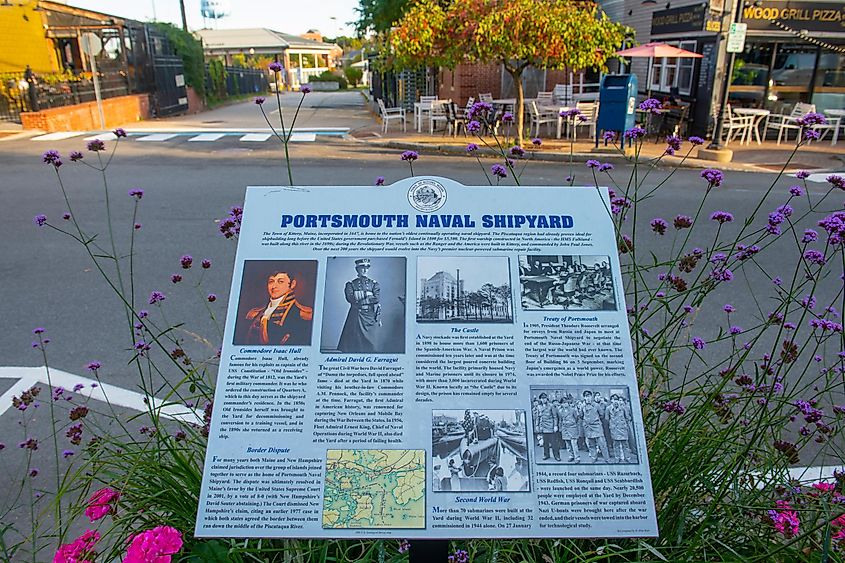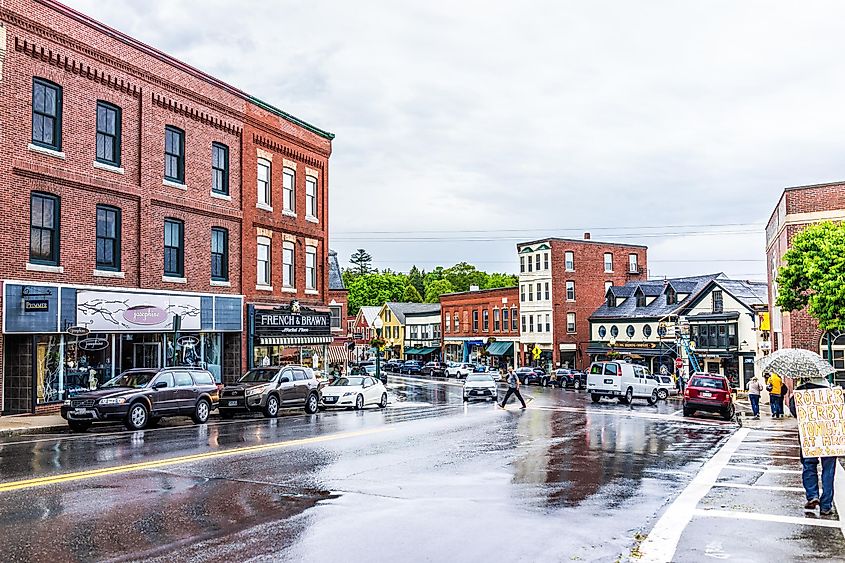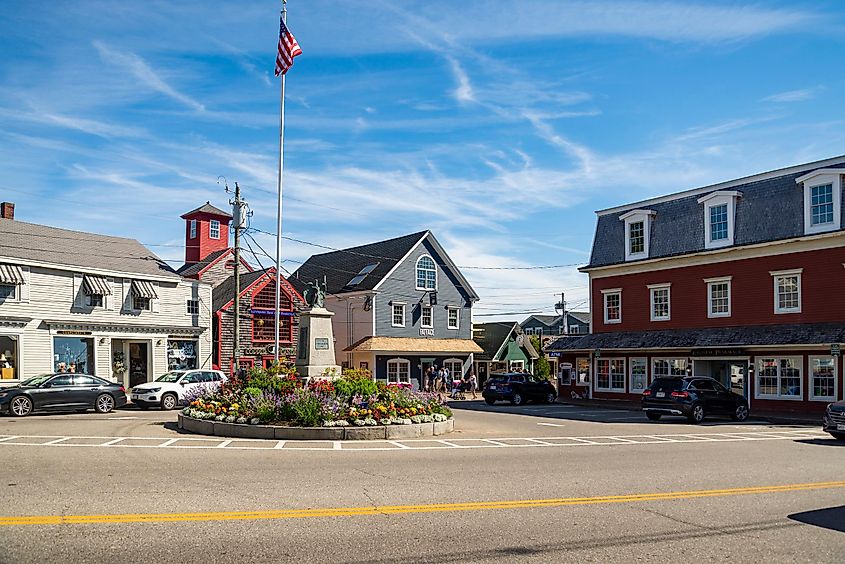
These Small Towns in Maine Have the Best Historic Districts
The northeast state of Maine is well-known as a historic place, and part of the larger US region of New England that helped wage the American Revolution and the War of Indpendence. Outside of these monumental histories, Maine's small towns provide a more focused, and equally fascinating, view to the state's local stories and past. From an economy that sprang from the sea, like fishing and shipbuilding in Seasport and Kittery, to inland gems like Paris and Van Buren, these small towns boast historic downtowns and the proud stories of local communities thriving in their corner of the world. Visitors will come away from these sites with new knowledge and deeper respect, for Maine's diverse traditions.
Searsport

Searsport, population 2,700, lies south of Bangor and abuts the Penobscot Bay on the Atlantic coast. Settled in the 1760s, the town boasts well-preserved historical areas, mostly from the early 1800s, when the town enjoyed regional prominence in the industries of shipbuilding and shipping. Known as the "home of famous ship captains," Searsport retains several stately homes of wealthy shipping leaders, as well as commercial buildings made of granite and brick. The town is also the home of the Penobscot Marine Museum, whose grounds include former captains' homes, commercial buildings, and the former town hall, erected in 1845, the same year of Seasport's incorporation.
Kittery

Kittery, with a total of 10,200 inhabitants, has been steeped in local history since its incorporation in 1647. (Kittery is in fact Maine's oldest incorporated town.) The town is tucked into the state's southernmost point, on the border with New Hampshire. The Kittery Point area gathers a numer of historic homes, built, as in Searsport, by wealthy ship captains and maritime industrial leaders. The nearby Pepperrell Cove likewise offers historic buildings, stunning water views, and the chance to try genuine Maine lobster — the seafood for which Maine is famous. Outside town, Whaleback Lighthouse, and the Wood Island Life Saving Station — forebear to the US Coast Guard — has plans to open as a museum to showcase its historic role in rescuing mariners in distress on Kittery's famously treacherous seas.
Bar Harbor

Bar Harbor, known to many Americans as a byword for luxurious Maine vacation spots, has a population of 5,300 and lies on Mt. Desert Island, not far from Maine's border with Canada. The town is a historic summer travel destination as well as a convenient jumping-off point for Acadia National Park as well as other attractions across Mt. Desert Island. In downtown Bar Harbor, the Abbe Museum celebrates Native American culture and history in the surrounding area. The Village Green offers a quaint green space in the heart of the historic downtown. Foodies should seek out Geddy's, a beloved local seafood restaurant, or opt for a sugary dessert at Mount Desert Island Ice Cream. If one green space isn't enough, Agamont Park offers a grassy walk with the added bonus of a beach and sea views toward the Mt. Desert Narrows waterway.
Camden

Camden, population 5,300, has in the past been called Maine's "Jewel of the Coast." Its High Street Historic District is celebrated locally for its shingle-style "cottages," often built by wealthy East Coast families, and a counterpart to the same trend in Bar Harbor. The influx of wealthy vacations transformed the Camden economy, which was previously focused on maritime and sea-related trades like fishing and boatbuilding. An 1892 fire destroyed a number of old CAmden structures, but the town's influential visitors contined to developed the town. Rebuilding in brick, the town erected 12 buildings, including the Camden Opera House and a Mason Temple that is now the Lord Camden Inn. Other natural, equally historic spaces include the Village Green and Camden Harbor Park.
Kennebunkport

Kennebunkport, with 4,000 residents, is famous as the site of the the summer residence of the Bush family, one of America's most prominent political dynasties. The town lies south of Portland on Maine's Atlantic coast, it was incorporated as early as 1653 — under the name Cape Porpus, now spelled Cape Porpoise. Kennebunkport's modern and historic attractions center around Dock Square, and shows the town's transition from longtime activities in fishing and shipbuilding to a tourism-focused vacation destination. Kennebunkport is also known as one of the wealthiest areas in the state, given its attraction to the upper class in surrounding New England and across the United States. For the rest of us, points of interest include the Seashore Trolley Museum, with a large collection of historic streetcars. St. Ann’s Episcopal Church, built in 1887, is built in stone and offers ocean views from its premises.
Van Buren

Van Buren, population 2,100, on Maine's St. John's River that marks the border with Canada, offers unique insight into Maine's role as a place for the French-speaking community that used to call the state home. The Acadian Village, now a National Park, showcases seventeen buildings constructed in stone, brick, and wood that portray life in the mid-1700s, a period which saw the French and Indian War (1756-63) and hastened the move of French speakers from English-controlled Maine to zones still in French control, namely Louisiana and its primary city, New Orleans. (The term "cajun" derives from a mispronunciation of the word Acadian.) Later historic buildings reflect the enduring French influence in Maine, not least the house of Fortunat Michaud, a Queen Anne-style residence that was completed in 1917 for the Maine politican of the same name.
Conclusion: Historic districts and a common state pride
As these small towns show, Maine's historic districts are only sometimes related to the state's historic ties with the sea. Van Buren and Paris offer a picture of inland Maine, and the deeper histories that make the state one of the most worthwhile places to visit in the United States. Maine's role as a vacation site is as obvious as its appeal, with historic downtowns in Bar Harbor and Kennebunkport making the state's attractiveness plain for even first-time visitors to see. Whether a tourist comes to Maine for the first time, or the latest visit of many, the state's historic districts continue to appeal, and educate, the traveler who knows that history is a key part of the present.











